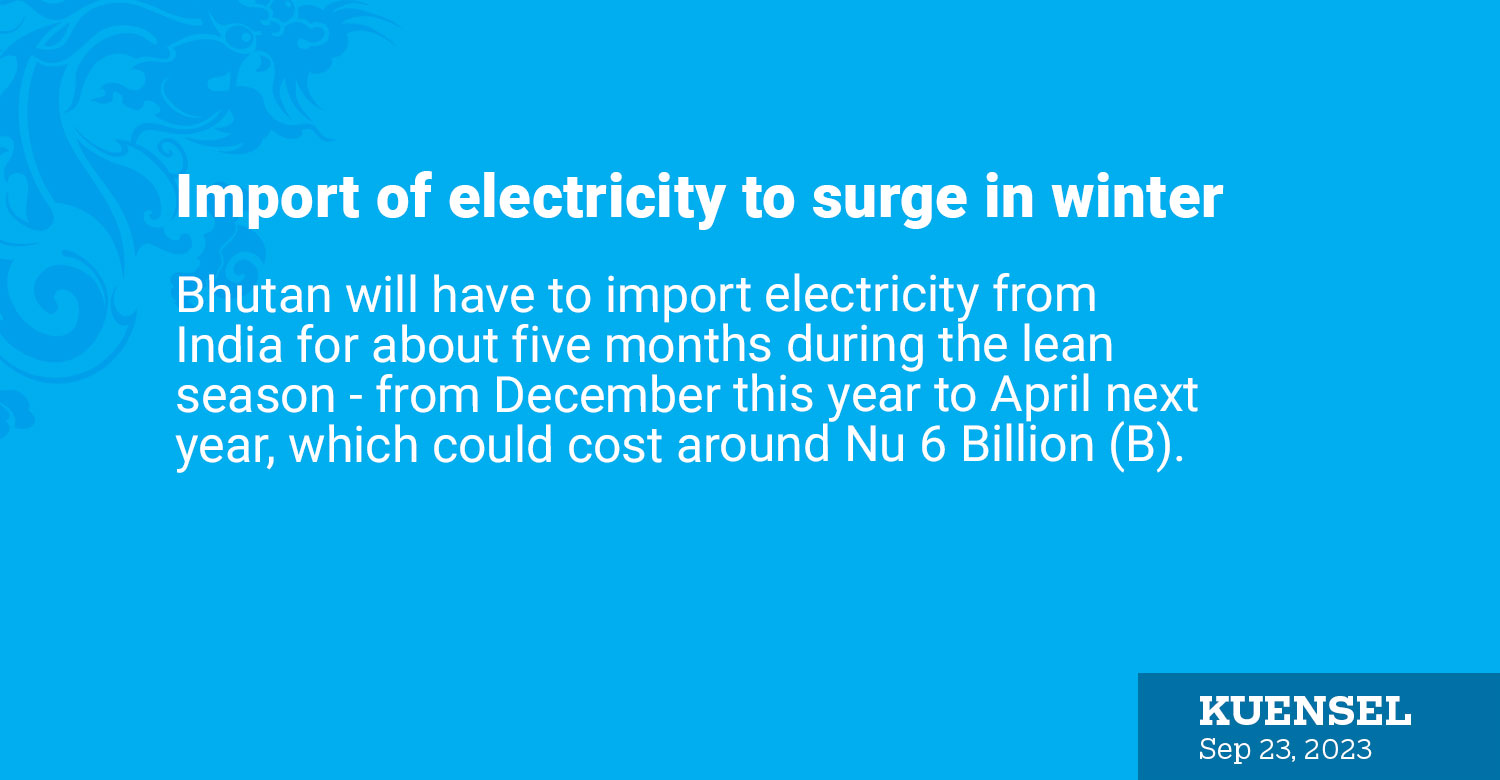
… from three months to five months now
Bhutan will have to import electricity from India for about five months during the lean season – from December this year to April next year, which could cost around Nu 6 Billion (B).
In the past, the Druk Green Power Corporation (DGPC) imported electricity only for three months. Given the increase in domestic demand, the pressure on imports has been on the rise with DGPC importing electricity for four months last year.
From December 2022 to March this year, DGPG imported 367.17 million units of electricity, worth Nu 1.75B
As per the lean season domestic demand and supply scenario study conducted by the Department of Energy, Bhutan Power Corporation, Bhutan Power System Operator, and DGPC, there is a requirement to import energy for five months from 2023 to 2024.
According to a senior official from the power sector, this is mainly on account of the substantial increase expected in domestic demand with several high-voltage consumers coming online.
The official said that during the five months, it is projected that over 1,500 million units will be imported. “Depending on the price of electricity on the Indian Energy Exchanges, the cost of import is estimated to exceed INR 6 B,” the official said.
During the five-month period, import is projected to exceed 800 MW at times.
Generations form hydropower projects are seasonal, with maximum generation occurring during the monsoon months from May to October, while generation drops drastically in the dry winter months from November to April, with February being the leanest month.
Currently, during the lean period, generation is about 400 to 450 MW, while the peak demand has crossed 750 MW and continues to grow.
The power official said that the current trend of needing to import power during the winter months is expected to continue at least for the next seven to eight years.
The import rates are higher than the export rates, but import could be planned to offset huge import bill. This is done through generating more energy by releasing water from the reserves during lean period. The demand for electricity drops in winter in India affecting the market price. However, the per unit import rate is higher than the export rate. Last winter Bhutan imported at Nu 8.35 per unit.
Power officials said the export tariffs are based on long-term Power Purchase Agreements (PPAs ), while imports are being made from the Indian energy spot markets. The energy markets in India are emerging. “In future, there may be opportunities for more comparable energy import prices.”
Meanwhile, there will be an additional generation capacity from the 118 MW Nikachhu project, which is expected to be commissioned by the end of December 2023.
However, official said that the firm power capacity addition during the winter months from Nikachhu project will be 23 MW while the Punatsangchhu II project will add another 164 MW.
The firm power generation from these two projects will help reduce the import, but the deficit in the winter months will continue, which will need to be supplemented through imports.
The official said that the energy sector in Bhutan is working to diversify its energy supply options. Solar power is seen as a more cost-effective solution for supplementing some of the winter deficits.
“Plans are in motion to initiate and install some 500 MW of solar generation capacity over the next couple of years.”












